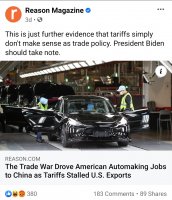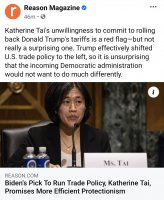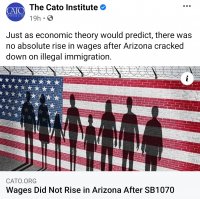"The benefits that immigration brings to society far outweigh their costs," declares an open letter to congressional leaders and President Donald Trump. The letter, published on Wednesday and signed by nearly 1,500 economistsincluding six Nobel Prize winnersnotes that immigrant entrepreneurs start new businesses that hire lots of Americans; that immigrants are far more likely to work in innovative, job-creating fields such as science, technology, and engineering; and that they bring diverse skill sets that keep our workforce flexible, help companies grow, and increase the productivity of American workers. A new study parsing employment data between 1991 and 2008 confirms that immigrants significantly boost both the productivity and the wages of workers.
The results? "What we found was remarkable. In cities that are unwelcoming to immigrants, as diversity rises, people's wages either don't change, or they go up by only a small amount. In cities that are welcoming to immigrants, as diversity goes up, people's wages go up, and by a lot."
If the intent of anti-immigrant laws is to boost native-born wages, it does not work. To the contrary, the researchers find that "the average worker in a metropolitan context featuring pro-immigrant laws receives a 36 percent wage increase." In addition, scoring in the top third of cities on the social capital inclusiveness indicator correlates with a 21 percent increase in the average worker's wage.
What appears to be happening is that in urban areas that welcome them, immigrants' economic and social diversity helps increase overall productivity, which in turn boosts average wages. How? Among other things, immigrants bring different skill sets, higher levels of ambition, and a greater likelihood of adopting more outside-the-box approaches to solving problems.







